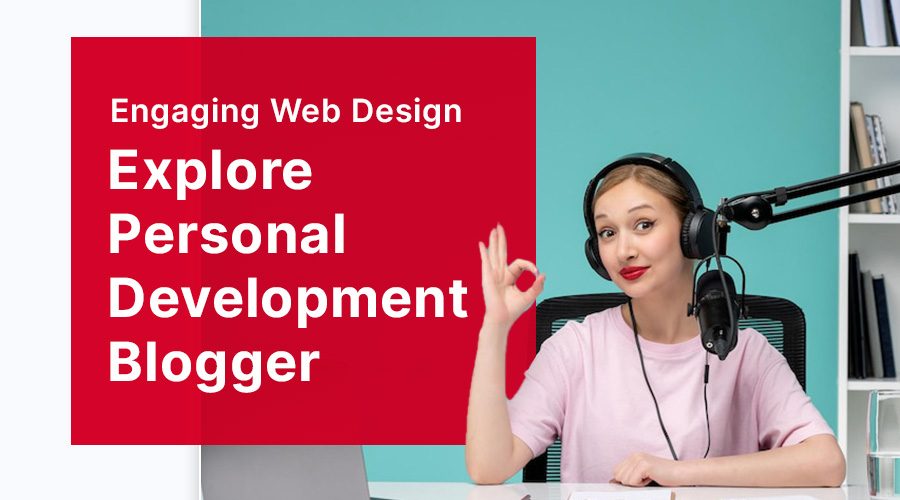Introduction
Hey there, are you a personal development blogger looking for ways to make your website more engaging? Or are you curious to understand what ticks behind a successful personal development blog’s web design? If you’re nodding, you’ve hit the jackpot! This is exactly the information we’re about to unpack. Brace yourselves for a virtual tour into the exciting and transformative world of engaging web design. Here, you’ll learn the tricks of the trade, from understanding your audience to crafting visually appealing blog posts.
Table of Contents
- Understanding Your Audience
- Importance of Aesthetic Appeal
- Interactive Elements: A Must-Have
- Mobile Optimization: Non-Negotiable
- The Power of Simplicity
Understanding Your Audience
Have you ever entered a room only to realize you’re at the wrong party? That’s how your readers might feel when they land on your blog, and it doesn’t resonate with their interests or needs. To prevent this, you must grasp the demographic and psychographic dimensions of your audience. How old are they? What’s their educational background? What are their pain points? What do they aspire to become? The more you know about your audience, the better you can tailor your blog’s web design to appeal to them.
Did you know that your readers’ digital behavior also significantly affects your web design? Just as people have unique shopping or travel preferences, they also have individual browsing habits. Some might prefer information-packed long-form content, while others might fancy short, snappy posts. By understanding these patterns, you can create a website that mirrors your audience’s preferences, making them feel right at home.
Importance of Aesthetic Appeal
Let’s dive into the visual aspect of your blog. Why? Because just like how we all secretly judge a book by its cover, your readers will judge your blog by its appearance. Can you recall a website you visited that was so beautiful it made you want to stick around and explore? That’s the power of aesthetic appeal.
When we talk about aesthetics, it’s not just about pretty colors or unique fonts. It’s about creating a visually consistent and cohesive space that reflects the content’s essence. A well-designed website tells your readers that you care about your craft and their experience. It’s like setting a proper table for guests; it shows you’ve put thought and effort into their visit. So, when designing your website, keep aesthetics in mind.
Interactive Elements: A Must-Have
Have you ever played a videogame that was so immersive it felt real? This is the effect that interactive elements can create on your blog. Interactive elements, like quizzes, surveys, and clickable infographics, can enhance your reader’s experience, making them active participants rather than passive observers.
Consider this: your readers are on a personal development journey, and they’re likely hungry for growth. By incorporating interactive elements that provide instant feedback or insights, you’re helping them on this journey. It’s like giving them a compass on their path of self-improvement. You’re not just providing content; you’re creating experiences.
Mobile Optimization: Non-Negotiable
Do you check your phone first thing in the morning? If you answered yes, you’re not alone. With smartphones becoming an extension of our hands, mobile optimization is no longer an optional feature for your blog; it’s a necessity. Imagine your reader excitedly clicks on your blog link only to find it unresponsive or skewed on their phone. Not the best first impression, right?
Mobile optimization ensures your blog looks just as good and works just as smoothly on a smartphone as it does on a computer. This is like having a welcoming mat in front of every door, no matter how small it is.
The Power of Simplicity
Remember the childhood joy of successfully assembling a puzzle? The straightforward joy of fitting the pieces together, one by one? That’s the kind of experience your readers should have when navigating your blog. Overcomplicating your web design might seem like a good idea to showcase your creativity, but if your readers can’t find what they need, they’re likely to bounce off.
The key is to keep it simple. A clean, intuitive design with straightforward navigation makes your reader’s journey effortless and enjoyable. Simplicity in web design is like decluttering your house; it’s all about eliminating the unnecessary so that the necessary can speak. When your readers can easily locate the information they need, they’re more likely to stay, read, and interact with your content.
Conclusion
Creating an engaging web design for your personal development blog is like preparing for a big party. You need to know your guests (audience), make your house look good (aesthetics), have engaging activities (interactive elements), ensure easy access to every room (mobile optimization), and keep things simple and organized (simplicity).
Remember, the goal is not just to make your blog visually pleasing but to make it a go-to resource for your readers on their personal development journey. At Webnobby, we believe in crafting websites that resonate with the audience while delivering high-quality content seamlessly. The journey to creating an engaging web design might seem overwhelming, but with these strategies in your arsenal, you’re already steps ahead.


